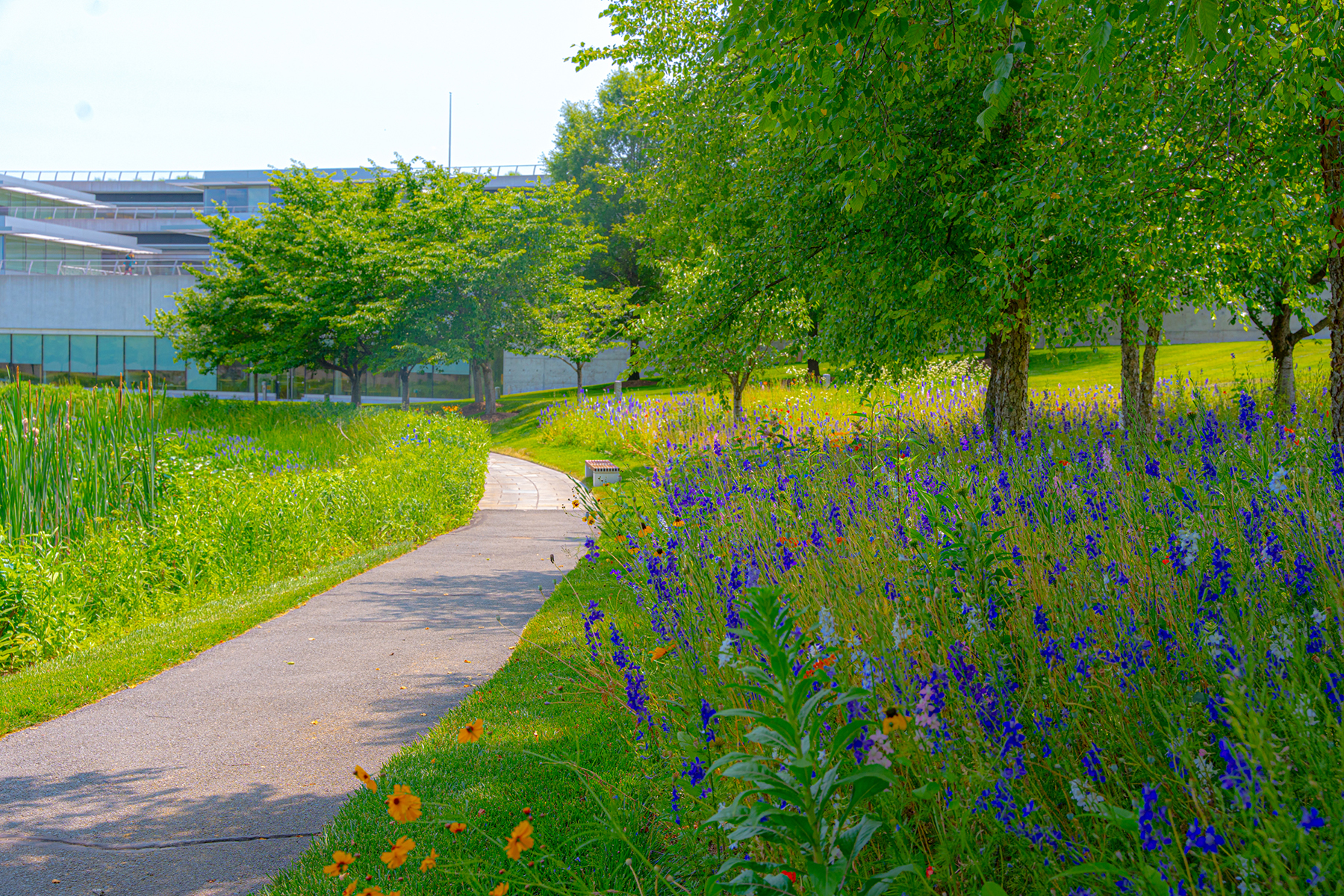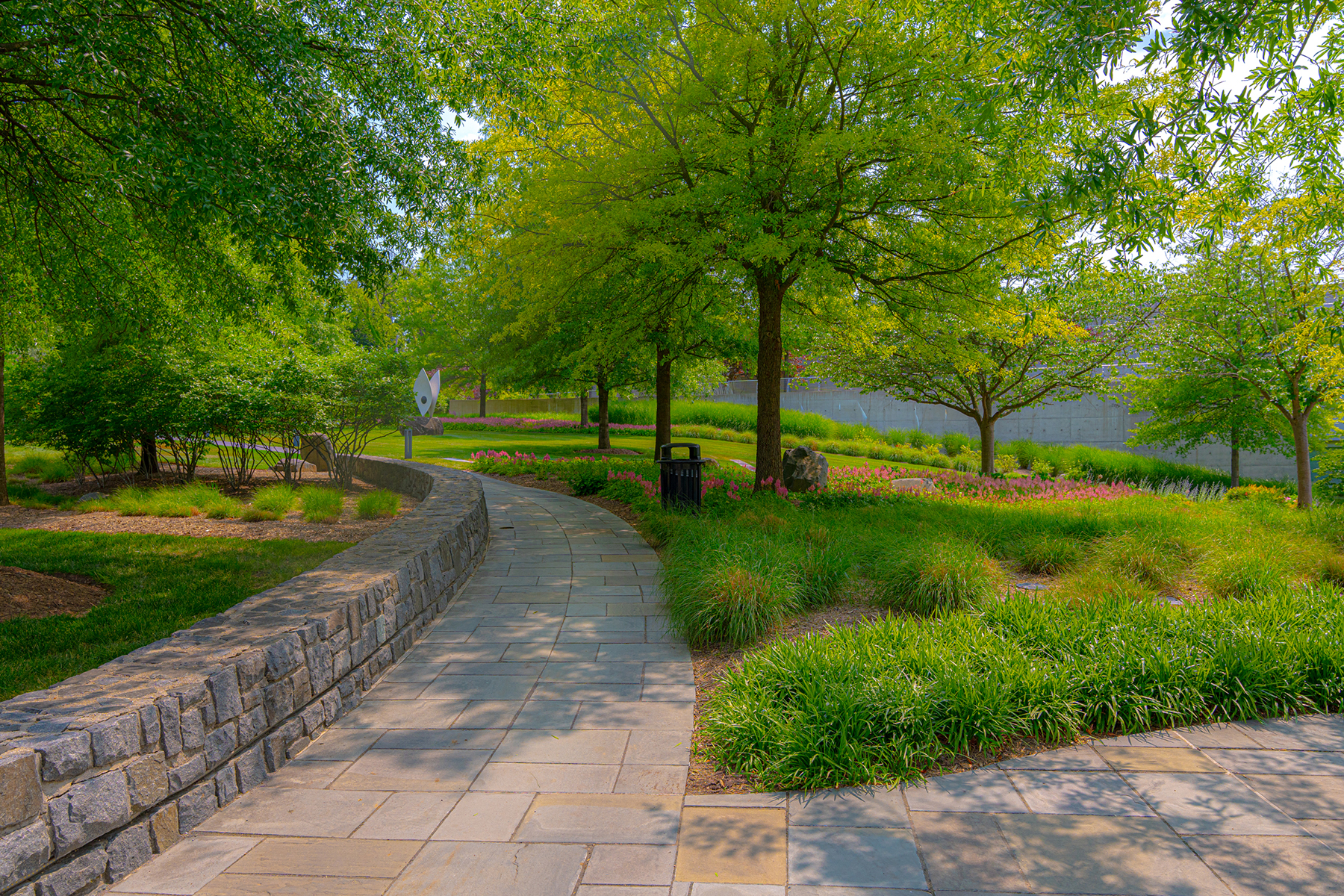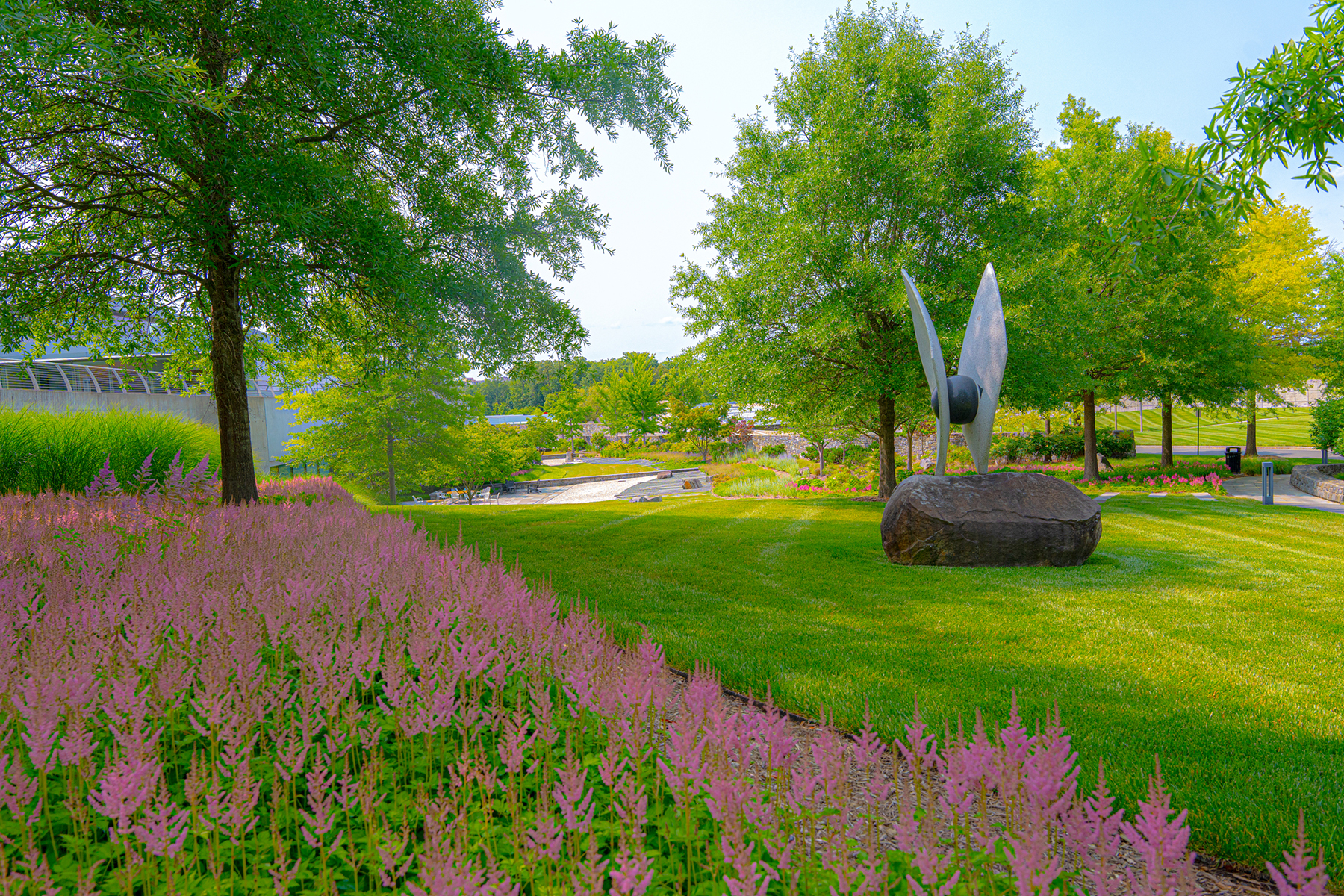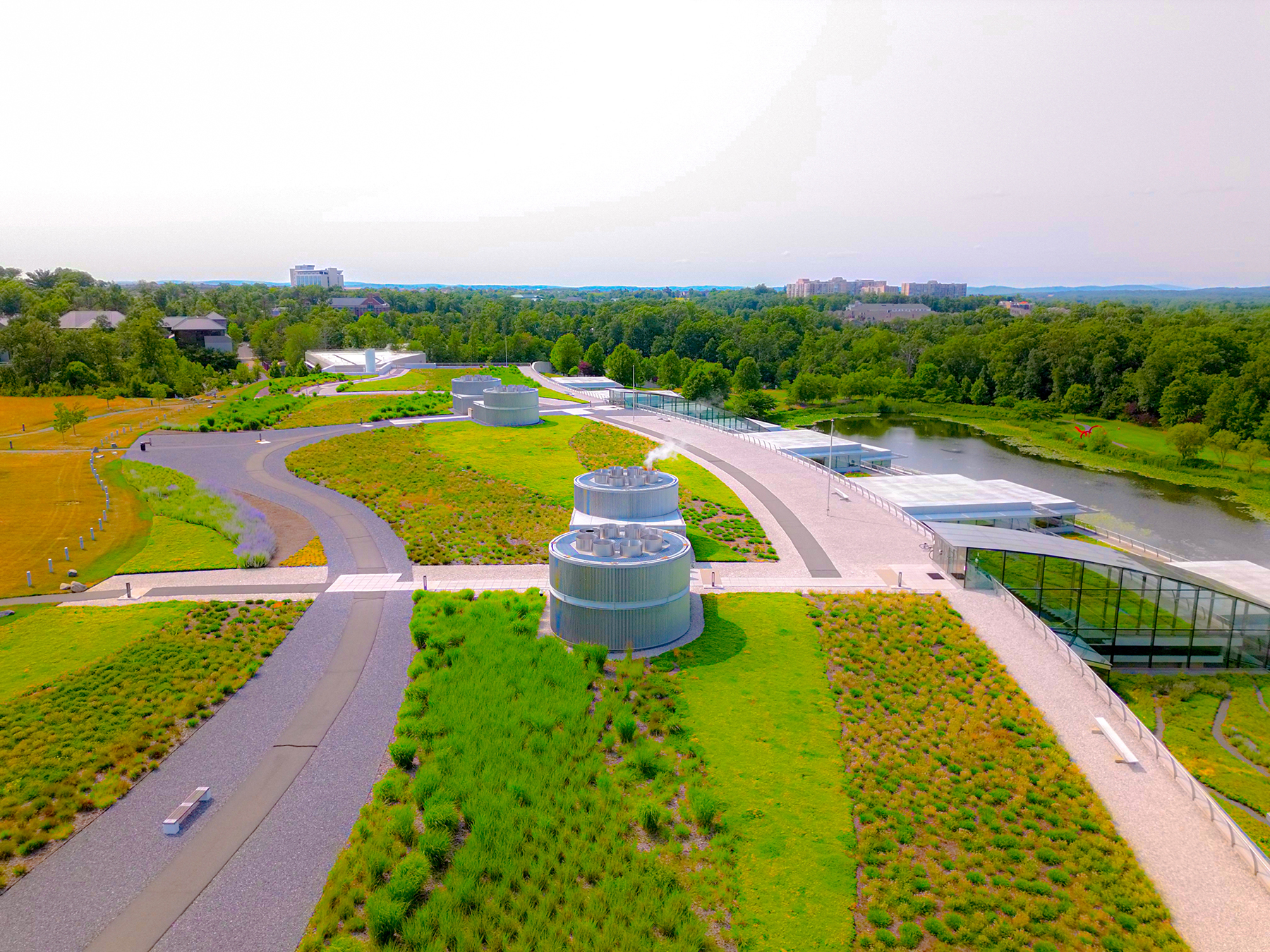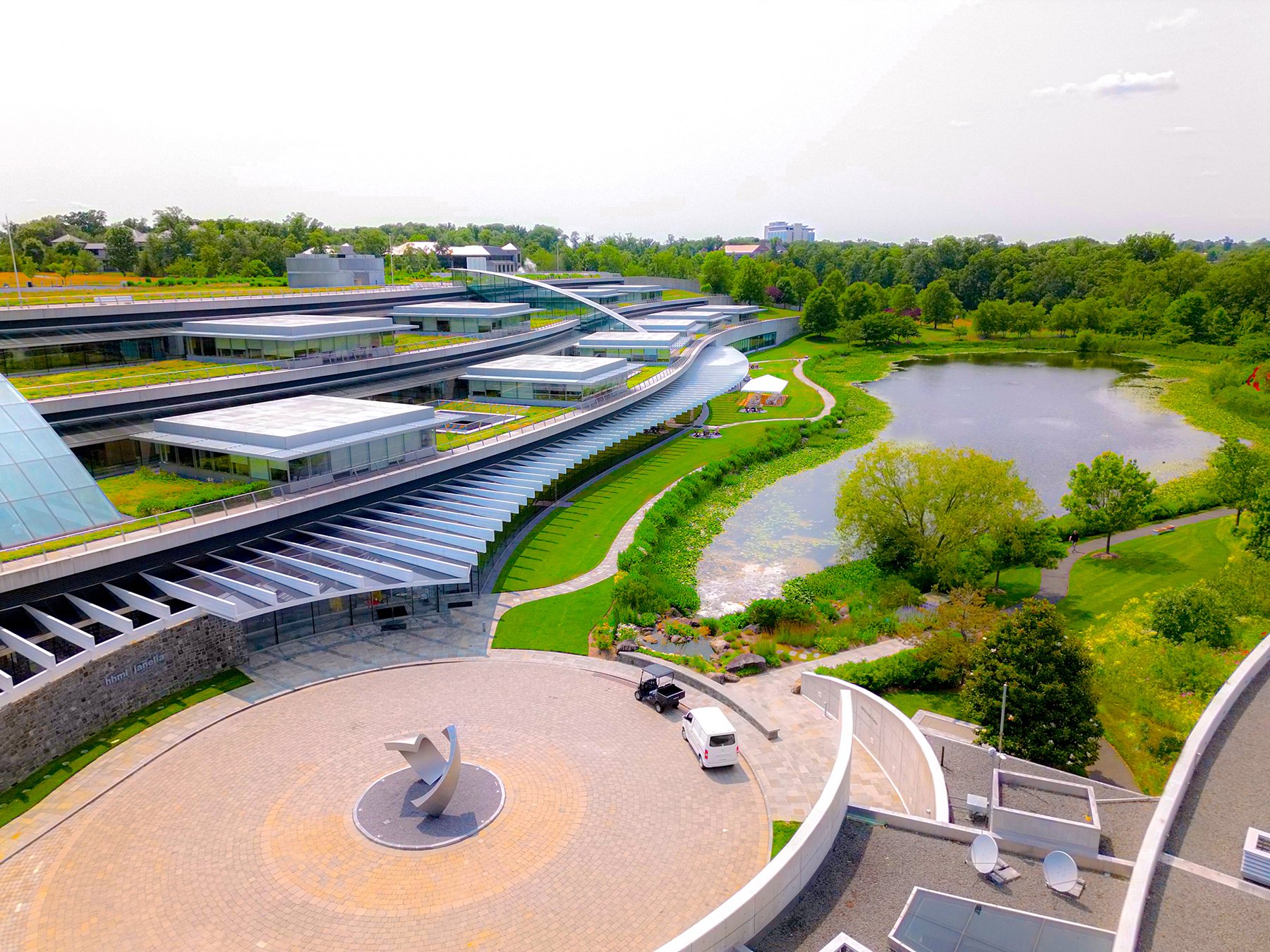HHMI's Janelia Campus, nestled along the Potomac River in Ashburn, Virginia, is a world-renowned scientific research facility. Since its inception in 2003, the campus has strived to become the preeminent research environment globally. The campus spans 600 acres and is dedicated to advancing scientific research while adhering to sustainable and regenerative landscape practices.
Challenges
Over the years, HHMI's Janelia Campus has faced evolving challenges in maintaining its sprawling landscape. The management team has had to address issues such as turf maintenance, erosion control, noise reduction, wildlife preservation, and sustainable landscape practices.
The Sustainable Regenerative Landscape Program
As part of its commitment to sustainability, the campus developed a Sustainable Regenerative Landscape Program that encompasses all aspects of the property. Key components of the program include:
1. Turf Management The campus employs propane mowers to create intricate patterns in the turf. All clippings and landscape debris are recycled, minimizing waste.
2. Noise Reduction: Electric equipment is used in sensitive areas, such as cell gardens, to reduce noise pollution, ensuring a conducive research environment.
3. Pathway Maintenance: Miles of walking paths are meticulously maintained daily, including surfaces like bluestone, asphalt, concrete, granite, marble chips, and gravel. These paths wind through wildflower corridors and riparian edges, enhancing the campus's natural beauty.
4. Wildflower Meadows: The campus plants over 1000 lbs of wildflower meadow mix annually to promote environmental responsibility and attract pollinators. Invasive species are managed by hand to reduce chemical usage.
5. Gardens & Sculptures: Artistic sculptures are integrated into meandering waves of perennial flowers, manicured lawns, ornamental grasses, and shrubbery, creating visually appealing landscapes.
6. Wildlife Sanctuary: Recognized by the Audubon Society, the campus hosts at least 10 Sanctuary Species, highlighting its commitment to biodiversity and ecological preservation.
7. Native Bluestone & Erosion Control: Native bluestone is used in pathways and retaining walls, paired with native landscape plant selections to control erosion and filter water, aligning with the sustainability plan.
8. Green Roof: The campus boasts a seven-acre green roof split across three levels, delicately managed to control invasive species by hand. This green roof serves as an extension of the walking and exercise paths, blending nature and research seamlessly.
9. Snow & Ice Management: The campus maintains a "zero tolerance" standard for snow and ice management on walkways, parking lots, and driveways, while considering the specific requirements of different paving materials.
10. Aquatic Garden: The Aquatic garden, featuring water lilies and waterfalls, is maintained without chemical treatments. Manual maintenance, including algae harvesting, is performed quarterly, contributing to the campus's eco-friendly initiatives.
Results
HHMI's Janelia Campus has successfully implemented a comprehensive Sustainable Regenerative Landscape Program that not only enhances the beauty of the property but also aligns with its commitment to environmental responsibility. The program has yielded several positive outcomes:
- Reduced water consumption due to decreased lawn areas.
- Minimal use of fertilizers, herbicides, fungicides, and insecticides.
- Increased pollinator presence, including bees, in the wildflower meadows.
- Preservation of diverse wildlife species recognized by the Audubon Society.
- A harmonious blend of research and nature, fostering a conducive research environment.
- A unique seven-acre green roof that serves as an additional natural space for researchers and visitors.
- Eco-friendly practices that contribute to the campus's mission of sustainability.
A Positive Example
HHMI's Janelia Campus serves as a remarkable case study of how a world-renowned research facility can integrate sustainable and regenerative landscape management practices into its daily operations. By prioritizing environmental responsibility and biodiversity, the campus continues to fulfill its mission of being a prestigious research environment while setting a positive example for sustainability in scientific communities worldwide.
Do you have a commercial landscaping project that you’d like to talk about? Request a consultation today. We’ll meet to learn more about your property and its challenges and come up with a comprehensive plan to take care of all of the details for you.

